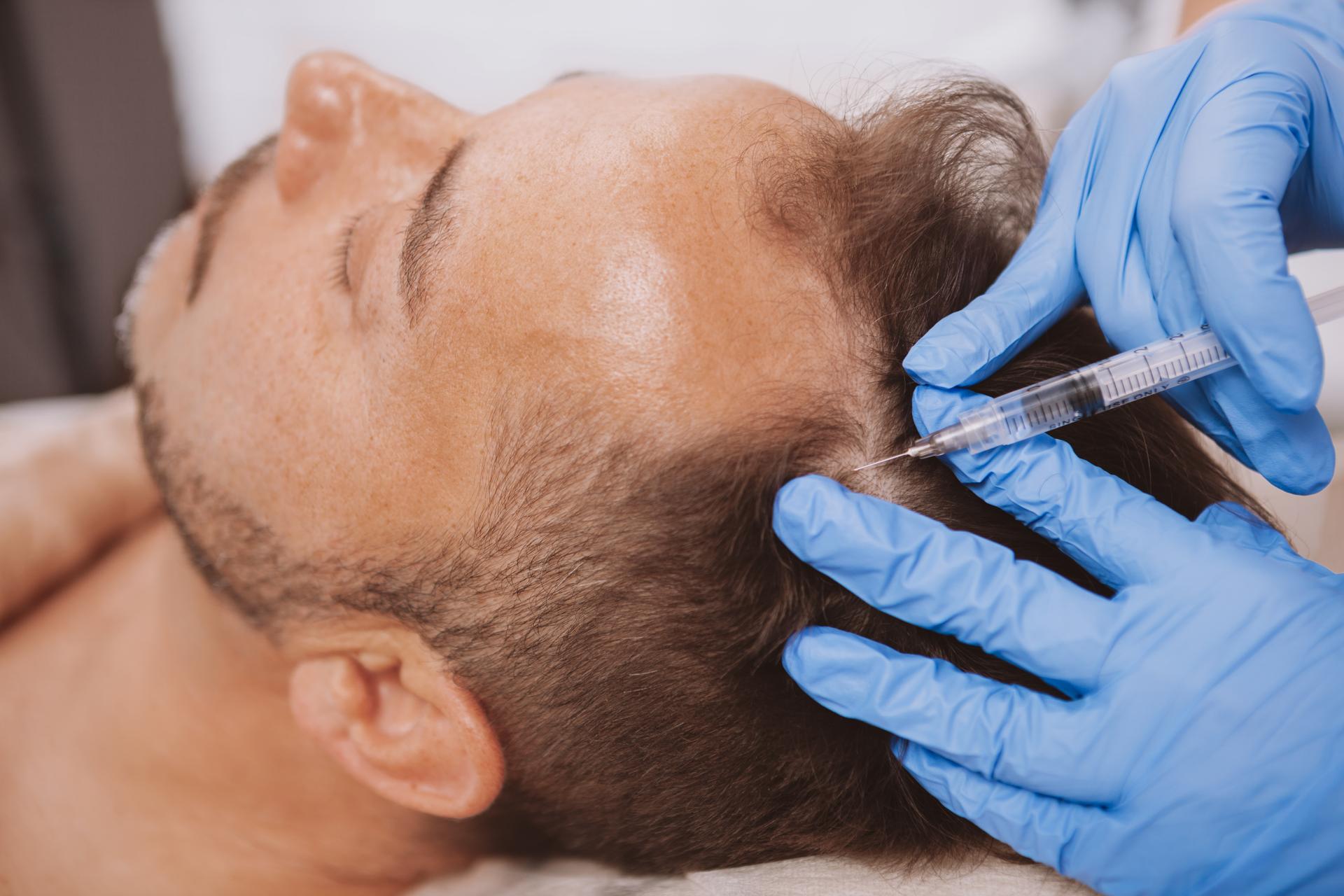Hair transplant surgery is a life-changing hair loss treatment option for many people dealing with hair thinning or balding. Whether you’re undergoing FUE (Follicular Unit Extraction) or FUT (Follicular Unit Transplantation), the goal is to restore natural hair growth and renew confidence. However, one surprising and sometimes alarming part of the healing process is something called “shock loss.”
If you’ve noticed shedding after a hair transplant, or are planning your procedure and want to be fully informed, this blog will explain what shock loss is, why it happens, and what to expect during recovery.
What Is Shock Loss?
Shock loss is the temporary loss of hair following a hair restoration procedure. It can affect both the newly transplanted hairs and the existing natural hairs near the treated area. While this may seem concerning, it’s a normal and expected part of the healing process for many patients.
Shock loss typically begins within two to eight weeks after your transplant. The hairs shed due to trauma to the scalp caused by surgery, not because the follicles themselves are damaged. In most cases, the hair will regrow within a few months.
Why Does Shock Loss Happen?
There are a few key reasons why shock loss can occur after hair transplant surgery:
Surgical Trauma
Even with the most advanced and minimally invasive methods, surgery still causes a small degree of trauma to the scalp. Hair follicles, especially those surrounding the transplant site, may temporarily enter a resting (telogen) phase and fall out.
Inflammation
The healing process involves swelling and inflammation, affecting nearby hair follicles and contributing to shedding.
Disruption of Blood Supply
The local blood flow can temporarily change when incisions or channels are made in the scalp to place new grafts. This may cause vulnerable hair follicles in the area to shed due to a lack of nourishment.
Graft Stress
Harvesting and implanting follicles can stress the transplanted hairs themselves. These grafts often shed before re-entering the natural hair growth cycle.
Who Is Most at Risk for Shock Loss?
Shock loss can happen to anyone after a hair transplant, but certain factors may increase your likelihood of experiencing it:
Younger Patients
Younger individuals with early hair loss may still have many native hairs in the thinning area. These can be more susceptible to shock loss due to their weaker follicular state.
Advanced Hair Loss
Patients with more severe balding often require larger graft sessions, which may create more trauma in the scalp and increase the chances of shock loss.
Thin or Miniaturized Hair
If you already have miniaturized hair in the transplant area due to androgenetic alopecia (male or female pattern baldness), those hairs may be more sensitive to surgical trauma and prone to shedding.
Is Shock Loss Permanent?
In most cases, shock loss is temporary. The follicles that shed during shock loss are not permanently damaged; they enter a dormant phase before a new growth cycle begins. Most patients see regrowth within three to six months, with continued thickening over the year following their procedure.
However, there are rare instances where shock loss can be permanent, especially if the hair is already fragile or if the patient has ongoing progressive hair loss. This is why personalized planning and skilled execution are key.
At New Jersey Hair Restoration Center, our team carefully evaluates each patient’s hair density, growth patterns, and donor availability to minimize the risk of long-term shock loss.
Can Shock Loss Be Prevented?
While shock loss can’t always be completely avoided, certain strategies can reduce its severity or likelihood:
Choose an Experienced Surgeon
The precision and technique of your provider play a major role. We will use advanced tools and methods to minimize trauma to the scalp.
Medical Management
In some cases, we may recommend medications like minoxidil (Rogaine) or finasteride (Propecia) before and after surgery to support follicle health and stabilize existing hair. Low-level laser therapy (LLLT) may also help improve circulation and reduce shedding.
Smaller, Staged Sessions
For patients with more severe hair loss, breaking up the transplant into smaller, more targeted sessions can help reduce trauma to the scalp and preserve surrounding hairs.
Proper Aftercare
Post-operative instructions are essential. Following your care plan—including avoiding strenuous activity, not scratching the scalp, and using gentle hair care products—can support healing and reduce unnecessary follicle stress.
When Should I Be Concerned?
While shock loss after transplant is typically harmless and temporary, there are instances when it’s important to consult your provider. If you experience excessive shedding that continues beyond three months, notice visible signs of infection or prolonged redness, or see no signs of regrowth by the six-month mark, it’s time to seek a professional evaluation.
We can assess your scalp to determine whether any intervention is necessary or if the shedding is still part of the normal healing process. To get expert guidance and personalized support during your recovery, schedule a consultation.
Navigate Shock Loss With Confidence Through a Consultation With Us
Shock loss after a hair transplant is a common part of the journey, and while it can be unsettling, it’s usually a sign that your scalp is healing and preparing for new growth. With the right guidance, skilled surgical technique, and appropriate aftercare, most patients fully recover with beautiful, natural-looking results.
At New Jersey Hair Restoration Center in Freehold Township, NJ, we take every step to educate, support, and guide our patients from the initial consultation to full recovery. Our personalized approach ensures you understand the process, manage expectations, and get the best results possible. To get expert guidance and personalized support during your recovery, schedule a consultation with us today.


